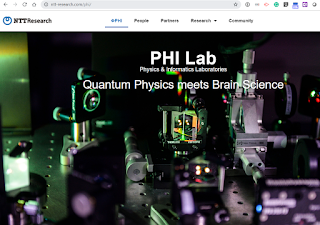The ONF released SD-RAN v1.0, the first software release for its cloud-native exemplar platform for software-defined RAN that is consistent with the O-RAN architecture.
The ONF’s first release of the SD-RAN project implements a minimal O-RAN consistent end-to-end mobile RAN stack intended as a development environment for building xApps for the emerging Open RAN ecosystem. It includes µONOS-RIC (ONF’s nRT-RIC based on µONOS) which interacts with RAN hardware (RU/DU/CU) via O-RAN consistent interfaces (E2AP), encodings (ASN.1), transport-protocols (SCTP) and Service Models (SMs). The release also includes a white-box based RU/DU/CU solution, leveraging OAI software, that has been enhanced to expose O-RAN consistent interfaces and protocols. To integrate with µONOS-RIC, the CU-CP RAN component has been enhanced with an E2 Agent that exposes the KPM-SM information-elements to xApps that connect to the nRT-RIC and subscribe to the KPM service. image png
Secondly, an end-to-end solution is provided. The RAN components interact with Samsung Android handsets as well as OAI User Element (UE) emulation software. For mobile core (EPC) integration, the RAN components interact with ONF’s OMEC mobile core.
This release also includes the beginnings of an app-SDK which can ease the process of creating xApps that are portable across different nRT-RIC platforms. As part of ONF’s commitment to supporting the O-RAN Alliance, this SDK is being shared with the O-RAN Software Community to support and promote availability of interoperable xApps and rApps that can work with a selection of nRT-RIC implementations.
Finally, the solution can be instantiated in two distinct forms to create nimble development environments. SD-RAN can run on reference white-box hardware, and it can also be instantiated entirely in a virtualized form (in a VM or server) in a distribution package called RiaB (sdRan-in-a-Box). The entire distribution including xApp, µONOS-RIC components, CU/DU, UE and OMEC can be instantiated within RiaB with just a few simple commands.
ONF launches 5G SD-RAN Project
The Open Networking Foundation (ONF) has launched an SD-RAN project with the aim of building an open source Near Real-Time RAN Intelligent Controller (nRT-RIC) compatible with the O-RAN architecture as well ONF’s existing base cloud-native solutions leveraging disaggregation and whitebox hardware.
ONF said its goal is to foster open source software platforms and multi-vendor solutions for mobile 4G and 5G RAN deployments.
Central to the project is the development of an open source near-real time RIC called µONOS-RIC (pronounced “micro-ONOS-RIC”). µONOS is a microservices-based SDN controller created by the refactoring and enhancement of ONOS, the leading SDN controller for operators in production tier-1 networks worldwide. µONOS-RIC is built on µONOS, and hence features a cloud-native design supporting active-active clustering for scalability, performance and high availability along with the real-time capabilities needed for intelligent RAN control. The O-RAN ALLIANCE E2 interface is used to interface between µONOS-RIC and vendor supplied RAN RU/DU/CU RAN components.
µONOS is a microservices-based SDN controller created by the refactoring and enhancement of ONOS, the leading SDN controller for operators in production tier-1 networks worldwide. µONOS-RIC is built on µONOS, and hence features a cloud-native design supporting active-active clustering for scalability, performance and high availability along with the real-time capabilities needed for intelligent RAN control. The O-RAN ALLIANCE E2 interface is used to interface between µONOS-RIC and vendor supplied RAN RU/DU/CU RAN components.
Carriers would be able to run new "xApps" on top of the µONOS-RIC. These open xApps could provide functionality that traditionally has been implemented in vendor-proprietary implementations, including providing visibility and control over the RAN.
Significantly, the ONF's SD-RAN project is backed by AT&T, China Mobile, China Unicom, Deutsche Telekom, Facebook, Google, Intel, NTT, Radisys and Sercomm.
A working skeleton prototype of the µONOS-RIC controller is already running above a RAN emulation platform through the E2 interface. ONF has demonstrated handover and load balancing at scale, supporting over 100 base stations and 100,000 user devices with less than 50ms handover latency (less than 10ms latency for 99% of all handovers). Field trials are expected by early 2021.




















